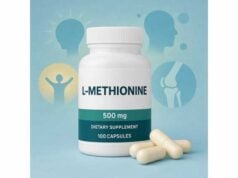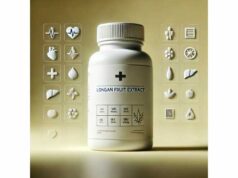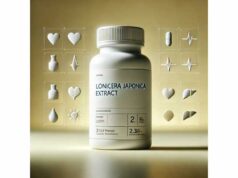
Lupeol is a plant-derived triterpenoid found in mango, olive, aloe, and many medicinal herbs. Over the past two decades it has drawn wide attention for its anti-inflammatory, antioxidant, and cytoprotective actions across skin, metabolic, cardiovascular, and neurological models. Researchers also study lupeol for selective anticancer effects in cells and animals, and for its potential to modulate master signaling hubs such as NF-κB, PI3K/Akt/mTOR, and Wnt/β-catenin. Despite promising lab findings, human data remain limited, and the compound’s poor water solubility makes formulation design important. As a supplement ingredient, lupeol typically appears in standardized botanical extracts (e.g., aloe, boswellia, olive leaf) or in encapsulated lupeol concentrates. This guide aims to give you a clear, practical picture: what lupeol is, how it might work, where the most credible benefits are emerging, how to use it safely, what to watch for, and where the evidence is strong versus preliminary.
Quick Overview
- May help calm inflammatory signaling and oxidative stress that underlie joint, skin, and metabolic complaints.
- Early neuroprotection signals (memory, synapses, glial activity) are preclinical; human evidence is pending.
- Typical supplemental exposure is 25–200 mg/day from lupeol-standardized extracts; begin at the low end.
- Avoid if you are pregnant, breastfeeding, scheduled for surgery, or on anticoagulants without medical guidance.
Table of Contents
- What is lupeol and how it works
- Evidence-backed benefits: what we know
- How to use lupeol day to day
- Dosage: how much and for how long
- Side effects, interactions, and who should avoid
- What the research says and where it is going
What is lupeol and how it works
Lupeol is a lupane-type pentacyclic triterpenoid (chemical formula C30H50O) that plants synthesize via the mevalonate pathway. It is present at measurable levels in everyday foods like mango pulp and olive fruit and in traditional botanicals such as aloe, ginseng oil, and various tree barks. In supplements, you will encounter lupeol either as a purified concentrate or, more commonly, as part of a standardized plant extract where lupeol serves as a marker compound for quality control.
Mechanistically, lupeol behaves as a pleiotropic modulator rather than a single-target drug. In preclinical systems it:
- Dampens pro-inflammatory transcription factors (e.g., nuclear factor-κB) and upstream kinases (MAPKs), reducing cytokines like TNF-α, IL-1β, and IL-6.
- Limits oxidative stress by improving endogenous antioxidant defenses (e.g., glutathione status, catalase, superoxide dismutase) and decreasing lipid peroxidation.
- Interferes with survival and proliferation pathways commonly overactive in chronic disease (PI3K/Akt/mTOR; Wnt/β-catenin), which may explain reports of anti-angiogenic and anti-invasive effects in tumor models.
- Shows membrane-interacting behavior in model bilayers, which might influence cellular signaling and permeability; this could also relate to skin-barrier benefits and bioavailability challenges.
- In neuronal and glial models, reduces microglial activation, protects synapses, and preserves long-term potentiation under inflammatory stress—signals that align with improved behavior in animal memory tests.
Two practical implications follow. First, lupeol is not a stimulant; users do not “feel” an acute effect like caffeine. Second, because it acts across several nodes, response can depend on context: diet, concurrent inflammation, and the presence of other phytochemicals (synergy or competition within a blend).
Finally, like many triterpenes, lupeol is hydrophobic with low aqueous solubility. That means the product’s delivery system—oils, phospholipids, nanoparticles, or simply taking it with a meal containing fat—can meaningfully change exposure. If you are comparing products, focus on extract standardization (percentage lupeol), excipients that aid absorption, and batch testing for identity and contaminants.
Evidence-backed benefits: what we know
Inflammation and pain
Across macrophage cultures and animal models of edema, arthritis, or incision pain, lupeol consistently lowers inflammatory mediators and edema volume. This anti-inflammatory footprint—NF-κB and MAPK down-regulation with parallel antioxidant shifts—likely drives many of lupeol’s downstream effects (skin, joints, metabolic tissues). In everyday terms, lupeol appears to “turn down the noise” in inflamed tissues rather than numb sensation like an analgesic.
Skin and wound support
Dermatology research points to lupeol’s role in damping keratinocyte hyperproliferation, reducing inflammatory markers in UV-stressed skin, and promoting orderly collagen deposition during wound healing. Because of its lipophilicity, lupeol incorporates well into topical creams and lipid carriers. Users often see it paired with aloe, olive-derived squalane, or shea butter in cosmeceuticals. For acne or irritated skin, a lupeol-containing topical may be more relevant than capsules.
Neuroprotection (preclinical)
In rodent and cell models of neuroinflammation and amyloid toxicity, lupeol protects synapses, curbs microglial activation, and improves memory performance. Mechanisms include suppression of pro-inflammatory cascades, rebalancing redox systems, and stabilizing synaptic proteins. These are encouraging signals, but human cognition data do not yet exist. If you are considering lupeol for brain health, treat it as adjunctive lifestyle support (sleep, exercise, Mediterranean-style diet) rather than a stand-alone therapy.
Metabolic and cardiometabolic health (preclinical)
In diet-induced metabolic stress, lupeol improves indices such as insulin resistance and lipid handling and reduces hepatic steatosis in animals. It also shows endothelial-protective effects and anti-apoptotic actions in cardiovascular models. Again, these are mechanistic and animal data; clinical translation remains to be shown, but the pattern is consistent with a compound that reduces background inflammatory and oxidative strain on metabolic tissues.
Selective anticancer activity (experimental only)
Lupeol inhibits proliferation, angiogenesis, and metastasis-relevant signaling in a range of human cancer cell lines and reduces tumor growth in animal models, sometimes synergizing with standard agents. Importantly, this is not clinical guidance—no human dosing protocols exist for cancer, and supplements must not replace oncology care. The anticancer literature is valuable mainly for understanding how lupeol tunes survival pathways that also matter in non-cancer inflammation.
Antimicrobial and oral health angles
Laboratory studies indicate broad antimicrobial pressure, including reduced quorum sensing and biofilm formation in some pathogens. Early oral-care formulations leverage lupeol-rich botanicals for gum health by decreasing inflammatory markers and supporting barrier function—an area to watch as better human trials emerge.
Bottom line: lupeol’s best-supported role today is as a gentle, multi-pathway modulator of inflammation and oxidative stress, with topical skin uses closest to real-world application and systemic benefits still largely preclinical.
How to use lupeol day to day
Choose a format that fits the goal
- Topical care (acne, redness, photoaging, minor wounds): Look for creams or serums listing lupeol or lupeol-rich extracts (e.g., aloe, olive, shea) and a declared lupeol percentage. Use once or twice daily on clean skin; pair with sunscreen in daytime.
- Capsules or softgels (systemic aims): Prefer products that disclose the lupeol content per serving (not just the herb dose) and include an absorption aid—oils, phospholipids, or a stated delivery technology.
- Food-based approach: Mango, olive products, and certain nuts and seeds supply small amounts of lupeol alongside fiber and polyphenols. Diet is not a substitute for a standardized supplement but supports the same pathways.
Stacking and synergies
- With quercetin or curcumin: These polyphenols act on overlapping inflammatory nodes; modest doses in combination can be more effective than high doses of one.
- With omega-3 fatty acids: Complementary effects on membrane composition and inflammation tone—helpful for joints and skin.
- With vitamin D and magnesium: Support immune balance and cellular signaling; useful background for general wellness.
- Topical pairing: In skin formulas, lupeol often pairs with niacinamide (barrier and redness) and panthenol (recovery).
Timing tips
- Oral: Take with a main meal containing fat to improve absorption. Consistency matters more than clock time.
- Topical: Night use allows barrier repair; morning use should be under sunscreen.
What to expect and when
- Topical: Reduced redness or tenderness can appear within 1–2 weeks; pigment or wrinkle changes require longer (8–12 weeks) and sun protection.
- Oral: Systemic “quieting” of inflammatory background is gradual; reassess at 6–8 weeks. Pair with lifestyle basics (sleep, movement, diet) for meaningful change.
Quality checklist
- Third-party testing for identity, heavy metals, solvents, and microbial contamination.
- Transparent standardization (e.g., “provides 50 mg lupeol per capsule”).
- Sensible excipients (phospholipids, MCTs) to aid solubility.
Dosage: how much and for how long
There is no official clinical dose of lupeol for any condition. Most commercial products supplying purified lupeol or lupeol-standardized extracts fall in the 25–200 mg/day range when used for general antioxidant and anti-inflammatory support. Given the lack of large human trials, a prudent plan is:
- Start low: 25–50 mg/day with food for 1–2 weeks to check tolerance.
- Titrate if needed: Increase to 100 mg/day, then up to 200 mg/day only if a clear rationale exists and no adverse effects occur.
- Cycle: Consider 8–12 weeks on, followed by 2–4 weeks off to reassess need.
- Topical dosing: Follow label guidance; typical leave-on products contain 0.1–1% lupeol within an emollient or liposomal base, applied once or twice daily.
Special contexts
- Skin-focused users: You may benefit more from a quality topical plus a diet rich in plant fats and polyphenols than from higher oral doses.
- Combination formulas: When lupeol is one component of a complex extract (e.g., boswellia), the effective lupeol dose may be lower; judge the product on clinical tradition and tolerability.
When to stop or seek advice
- No meaningful change after 8–12 weeks despite consistent use.
- New symptoms (rash, mouth ulcers, unusual bruising, dark stools).
- You start a medication with bleeding risk, immunosuppression, or chemotherapy—discuss timing and necessity with your clinician.
Side effects, interactions, and who should avoid
Tolerability
Lupeol has shown a wide safety margin in animal studies at doses far exceeding typical human exposures. In supplements and cosmeceuticals, reported side effects are uncommon and usually mild: transient GI upset, headache, or skin irritation with topicals. Because many lupeol products are plant extracts, reactions may reflect other constituents or allergens in the formula.
Potential interactions
- Anticoagulants and antiplatelets: Many anti-inflammatory phytochemicals can subtly influence platelet function and endothelial tone. If you use warfarin, DOACs, or dual antiplatelet therapy, coordinate with your clinician and monitor for signs of bleeding.
- Immunomodulators: By modifying inflammatory signaling (NF-κB/MAPK), lupeol could theoretically interact with immunosuppressive regimens; avoid unsupervised use.
- Chemotherapy/radiation: Preclinical synergy and cytoprotection data are hypothesis-generating only. During active oncology treatment, do not add lupeol without your oncology team’s approval to avoid blunting treatment or causing interactions.
- Surgery: Stop non-essential botanicals 1–2 weeks before elective procedures unless your surgical team says otherwise.
Who should avoid or use only with medical guidance
- Pregnant or breastfeeding individuals: Insufficient safety data.
- People with bleeding disorders or on blood thinners: Use only with clinician oversight.
- Children: No established dosing; avoid outside of clinician-directed care.
- Allergy-prone users: Patch-test topicals; with oral products, start at the low end and monitor.
Practical safety habits
- Choose products with third-party testing.
- Introduce one new supplement at a time.
- Keep a simple log of dose, timing, and any symptom changes for 2–4 weeks.
What the research says and where it is going
The lupeol literature is rich in mechanistic and animal studies and increasingly detailed reviews. The through-line is consistent: lupeol tunes inflammatory and oxidative signaling in ways that protect tissues under stress. Distinct areas stand out:
- Neuroinflammation: Multiple preclinical papers show lupeol reduces microglial activation, preserves synapses, and protects memory performance under amyloid or LPS stress. These models map to real-world complaints—brain fog, age-related cognitive changes—but the absence of randomized human trials is the critical gap.
- Dermatology: Because lupeol is lipophilic and membrane-active, topical applications are plausible and supported by mechanistic endpoints (inflammatory mediators, collagen organization). Expect to see more controlled human dermatology trials first, especially for acne and post-procedure recovery.
- Cardiometabolic health: Signals include better insulin sensitivity, lipid handling, and endothelial function in animals. Translation will require dose-finding and formulation work to overcome solubility limits.
- Oncology: Selective anti-proliferative effects and synergy with agents such as 5-fluorouracil occur in cells and animals. Clinical development would need careful pharmacokinetics and interaction mapping to ensure safety and efficacy.
Methodological needs
- Human pharmacokinetics: How much lupeol reaches circulation (and tissues) from various delivery systems? What is the time–concentration curve with food?
- Dose-response trials: Small, well-designed studies in defined populations (e.g., inflammatory skin conditions, metabolic syndrome) with clear biomarker endpoints.
- Formulation science: Phytosomal, nano-, or lipidic carriers that improve oral bioavailability while maintaining safety.
- Standardization: Harmonized reporting of lupeol content across extracts to enable cross-study comparisons.
Practical takeaway
Lupeol is best framed as a low-intensity, multi-pathway modulator with strong plausibility and specific topical uses today. For systemic goals, pair a reasonable lupeol dose with foundational care (dietary pattern, movement, sleep) and consider it an adjunct, not a primary treatment.
References
- Lupeol and its derivatives as anticancer and anti-inflammatory agents: Molecular mechanisms and therapeutic efficacy 2021 (Systematic Review)
- A Triterpenoid Lupeol as an Antioxidant and Anti-Neuroinflammatory Agent: Impacts on Oxidative Stress in Alzheimer’s Disease 2023 (Systematic Review)
- In-depth analysis of lupeol: delving into the diverse pharmacological advantages and bioavailability 2024 (Systematic Review)
- Lupeol Treatment Attenuates Activation of Glial Cells and Mitigates Behavioral Deficits in an LPS-Induced Neuroinflammation Mouse Model 2022 (Preclinical Study)
- Lupeol, A Novel Anti-inflammatory and Anti-cancer Dietary Triterpene 2009 (Seminal Review)
Disclaimer
This article is for educational purposes and does not provide medical advice. Lupeol is not approved to diagnose, treat, cure, or prevent any disease. Always consult a qualified healthcare professional before starting, stopping, or combining supplements—especially if you are pregnant or breastfeeding; have a medical condition; are scheduled for surgery; or take prescription medicines, including blood thinners, immunosuppressants, or cancer therapies.
If you found this guide helpful, please consider sharing it with friends or colleagues on Facebook, X (formerly Twitter), or your preferred platform, and follow us for future updates. Your support helps us continue producing clear, trustworthy health content.










